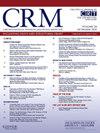“A stratified pathway to stent-free reperfusion: Selecting suitable patients in ST-elevation myocardial infarction”
IF 1.6
Q3 CARDIAC & CARDIOVASCULAR SYSTEMS
引用次数: 0
Abstract
Background
The DANAMI-3 DEFER study demonstrated that deferring stent implantation in ST-elevation myocardial infarction (STEMI) is safe, although not superior to immediate stenting. It is possible that an individualized revascularization strategy in STEMI, achieved through appropriate patient selection, could be feasible and effective.
Methods
This prospective, non-randomized study included 198 patients with STEMI who underwent primary percutaneous coronary intervention (PCI) between October 2019 and November 2021. Patients were assigned to either the deferred stenting (DS) group (n = 19) or the control group (C) undergoing immediate stenting (n = 179) based on a multimodal approach integrating coronary angiography, intravascular imaging, physiological assessments, and clinical judgment. The primary endpoints included all-cause mortality and major adverse cardiac and cerebrovascular events (MACCE).
Results
The DS group showed a significantly lower rate of stent implantation (10.5 % vs. 97.7 %, p < 0.001) and a higher use of thrombus aspiration (89.5 % vs. 30.7 %, p < 0.001) and glycoprotein IIb/IIIa inhibitors (31.6 % vs. 6.7 %, p < 0.001) compared to the C group. No significant differences were observed between the groups in terms of all-cause mortality (5.3 % vs. 8.9 %, p = 0.59) or MACCE (10.5 % vs. 8.4 %, p = 0.71).
Conclusions
This study demonstrates the feasibility of implementing individualized reperfusion strategies in STEMI within a real-world clinical setting. The findings, while limited by the study design, generate valuable hypotheses that warrant further investigation to refine patient selection criteria and optimize outcomes.
"无支架再灌注的分层途径:选择 ST 段抬高心肌梗死的合适患者"。
背景:DANAMI-3 DEFER研究表明,ST段抬高型心肌梗死(STEMI)患者推迟支架植入是安全的,尽管并不比立即植入支架更有优势。在 STEMI 中,通过适当选择患者而实现的个体化血管再通策略可能是可行且有效的:这项前瞻性非随机研究纳入了 198 名 STEMI 患者,他们在 2019 年 10 月至 2021 年 11 月期间接受了一次经皮冠状动脉介入治疗(PCI)。根据综合冠状动脉造影、血管内成像、生理评估和临床判断的多模式方法,患者被分配到延迟支架植入组(DS)(n = 19)或立即支架植入对照组(C)(n = 179)。主要终点包括全因死亡率和主要不良心脑血管事件(MACCE):结果:DS 组的支架植入率明显较低(10.5% 对 97.7%,P 结论:DS 组的支架植入率明显较高:这项研究证明了在实际临床环境中对 STEMI 实施个体化再灌注策略的可行性。研究结果虽然受到研究设计的限制,但提出了有价值的假设,值得进一步研究,以完善患者选择标准,优化治疗效果。
本文章由计算机程序翻译,如有差异,请以英文原文为准。
求助全文
约1分钟内获得全文
求助全文
来源期刊

Cardiovascular Revascularization Medicine
CARDIAC & CARDIOVASCULAR SYSTEMS-
CiteScore
3.30
自引率
5.90%
发文量
687
审稿时长
36 days
期刊介绍:
Cardiovascular Revascularization Medicine (CRM) is an international and multidisciplinary journal that publishes original laboratory and clinical investigations related to revascularization therapies in cardiovascular medicine. Cardiovascular Revascularization Medicine publishes articles related to preclinical work and molecular interventions, including angiogenesis, cell therapy, pharmacological interventions, restenosis management, and prevention, including experiments conducted in human subjects, in laboratory animals, and in vitro. Specific areas of interest include percutaneous angioplasty in coronary and peripheral arteries, intervention in structural heart disease, cardiovascular surgery, etc.
 求助内容:
求助内容: 应助结果提醒方式:
应助结果提醒方式:


